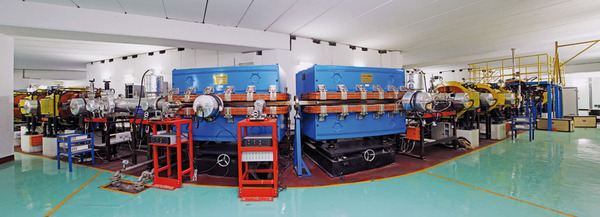Monday – introduction
H. Schatz – status of nuclear experiments relevant to thermonuclear bursts (TBC)
A. Heger – status of burst modelling
Tuesday – simulations
J. Lattimer – Summary of neutron star radius from observations, theory and experiment with implications for the core-crust interface including pasta
A. Cumming – Kepler simulations for GS 1826-24
F. Theielmann – Spherical Simulations of Multple X-ray Bursts: Aiming for Superbursts
Wednesday – observations
D. Galloway – status of burst observations
A. Deibel – The “anomalous” shallow heating mechanism in neutron star transients
Recently, a fit to the quiescent light curve of the hottest neutron star transient, MAXI~J0556-332, demonstrated that powerful heating must operate during the accretion outburst and must be confined to the first hundreds of meters in the star (Deibel et al. 2015). Interestingly, extra heating at these depths is required to fit the quiescent light curves of other neutron star transients, such as KS~1731-260 and MXB~1659-29 (Brown & Cumming 2009). The source of this extra heating, which is a factor of 6 stronger than accretion-driven nuclear reactions, is still unknown. Interestingly, preliminary calculations suggest that the viscous dissipation of oscillations in the neutron star ocean provides a heat flux into the overlying envelope sufficient to reconcile light curve models with observations. I will discuss our ongoing work on the strength, depth, and characteristic timescales of viscous dissipation heating.
J. Chenevez – burst observations with NICER
L. Keek – Anisotropic Reflection of Carbon Flames
We present a range of topics related to the observation and interpretation of superbursts: carbon flashes on accreting neutron stars. A detailed analysis of the 2001 superburst from 4U 1636-536 reveals the radial propagation of the carbon flame. Furthermore, the impact of the X-rays on the accretion disk may produce large reflection fractions. We employ numerical models to investigate the anisotropy factors and reflection fractions produced by different disk geometries. Future instruments such as NICER will be able to measure X-ray reflection even in short bursts. Additionally, we present a preliminary analysis of the recent superburst from IGR J17062-6143. Finally, a new regime of stable burning of H and He has been identified in models, that produces carbon in sufficient amounts to power superbursts.
Thursday – nuclear experiment & modelling
H. Schatz – sensitivity of burst simulations to nuclear rate uncertainties
Y. Sun – Shell models for nuclei in the rp-process
To carry out detailed study for exotic nuclear structure and to provide necessary nuclear input for astrophysical models and simulations, we have made progress in the development of two types of shell model: the large-scale shell model based on spherical basis and the projected shell model based on deformed basis. Our goal is to make reliable calculations for deformed nuclei in the medium to heavy mass regions where the conventional shell-model cannot work. With these two types of shell models, one can predict masses, calculate energy levels of high excitations and G-T rates for the excited states, and study structure of isomers.
In the study with the large-scale shell model, we have proposed a new effective interaction based on the multpole-multipole-plus-pairing interactions combined with the universal monopole force. It can be applied to the heavy nuclei along the N=Z line. Physics of the neutron-proton pairing and effect of isospin-symmetry breaking can thereby be discussed.
The projected shell model starts from a deformed basis, instead spherical basis in conventional shell models. Angular momentum projection technique is then applied to transform the states from intrinsic to laboratory one, and many-body wave functions are constructed by superposition of the projected states. This model has been applied in many nuclear structure problems. For nuclear astrophysics interests, it is probably the only method available if one wants to carry out shell model study for heavy systems beyond the traditional QRPA method.
This work is supported by the Chinese National Science Foundation.
Friday – other topics
A. Cumming – chemical separation in accreting neutron stars
A. Deibel – Shallow Urca cooling pairs in the accreted neutron star ocean and crust
Reaction network calculations predict that the crust of an accreting neutron star should host Urca reactions: electron-capture/beta-decay cycles that cool the crust through neutrino emission (Schatz et al. 2014). Neutron star transients offer an opportunity to test this prediction. During accretion outbursts, the crust of a neutron star transient reaches temperatures above T > 2e8 K where Urca cycling is expected to balance the accretion-driven crust heating. Post-outburst thermal evolution models of the hottest transient MAXI~J0556-332, however, have shown that the Urca cooling reactions must take place deeper in the star than predicted, or must be absent entirely, in order to fit quiescent observations (Deibel et al. 2015). New calculations suggest that there are additional Urca cooling pairs in the neutron star ocean, with significant neutrino luminosities. I will discuss these shallow Urca pairs and how the presence of strong Urca cooling throughout the ocean and crust impacts thermal evolution predictions.
J. Chenevez – The NICER mission: capabilities, status, and expectations for burst science
NICER is an X-ray astrophysics payload in development at NASA GSFC for launch to the International Space Station in late 2016, to uncover the physics of neutron star structure, dynamics, and energetics. Its X-ray Timing Instrument, which consists of grazing-incidence optics and silicon-drift detectors, is a fast spectroscopic photometer designed to observe the rapidly modulated emissions of neutron stars in all of their manifestations, including rotation-powered pulsars, magnetars, and accreting X-ray binary systems. This presentation highlights NICER’s scientific objectives, instrument capabilities, and status of the flight hardware.
We expect NICER to observe thermonuclear bursts exhibiting photospheric radius expansion. Such bursts may eject nuclear burning ashes yielding absorption features in the burst spectra. A positive detection of photoionization edges during X-ray bursts would imply that heavy H-like ions are ejected from the neutron star, and it would probe the thermonuclear burning processes. The identification of redshifted edges would even provide a direct measure of the neutron star mass, so it would constrain the ultra-dense matter equation of state.
